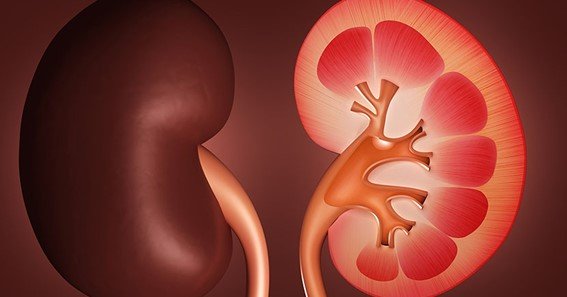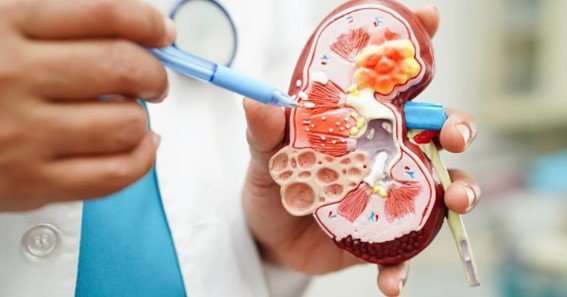What is BUN creatinine ratio? This question is crucial to medical diagnosis, especially when assessing kidney function. The BUN to creatinine ratio tells doctors how well the kidneys are operating. It measures blood urea nitrogen and creatinine. Kidneys remove these two wastes. This number can explain everything from kidney disease to not drinking enough water. This detailed article will explain what is bun creatinine ratio and its effects.
What Is Bun Creatinine Ratio?
BUN and creatinine levels indicate renal function. Muscles produce creatine from protein breakdown. BUN is made by protein breakdown in the liver. The kidneys filter blood and excrete both compounds in urine. The BUN creatinine level indicates renal function. You may also be dehydrated, have kidney disease, or have other kidney issues. BUN to creatinine fluctuations can harm your health. It must be 10:1–20:1. This shot answer you have given you a basic understanding on what is bun creatinine ratio.
Importance Of Bun And Creatinine In Kidney Function

After getting what is bun creatinine ratio, let’s understand its importance. BUN and creatinine are good kidney health indicators. The kidneys remove waste and pollutants to purify the blood. Thus, the body’s inside is protected. A higher BUN can result from eating more protein, having stomach bleeding, or having poor kidney function. However, creatine levels depend on muscle mass and alter slightly. High creatinine levels usually impair renal function. The BUN creatinine ratio reflects kidney health when both levels are combined. High numbers may indicate thirst or gastric bleeding. Low numbers may indicate liver or renal disease. Knowing how BUN and creatinine vary helps diagnose and treat renal issues.
BUN and creatinine levels should be monitored to detect renal issues early. This allows therapy to begin immediately and prevent recurrence. These signals also assist doctors in assessing medication efficacy and identifying treatment methods. BUN to creatinine levels can also distinguish pre-, mid-, and post-kidney problems. This knowledge aids doctors in diagnosis and treatment.
How Is The Bun Creatinine Ratio Measured?
After knowing about what is bun creatinine ratio, let’s know how to measure it. A simple blood test measures BUN creatinine. The doctor’s or nurse’s blood will be tested at the lab for BUN and creatinine. The blood is divided by BUN by creatine to get the ratio. The ratio that answers tells us a lot about kidney function. Inetherclinico is commonly combined with GFR and urinalysis in the clinic to assess kidney health.
Factors Influencing Bun Creatinine Ratio
Many factors can affect BUN creatinine, making it difficult to calculate. Without enough blood to their kidneys, people who don’t drink enough water process less and resorb more urea, resulting in a high ratio. Taking some medicines, eating a lot of protein, or having stomach bleeding can raise BUN. Low ratios can cause chronic renal or liver damage. Chronic renal disease elevates BUN and creatinine but maintains a low ratio. You must know these things to read the BUN creatinine ratio and diagnose your health.
Clinical Significance Of Bun Creatinine Ratio

Doctors use the BUN creatinine ratio to diagnose several health issues. Being thirsty before their kidneys fail is common in people with a high ratio because they don’t obtain enough blood. This can occur after a shock or heart failure. However, a low level may indicate kidney damage from an acute or chronic renal injury. The number helps doctors distinguish prerenal and renal acute kidney damage. It helps them determine the optimum patient treatment.
Limitations Of Bun Creatinine Ratio
Though flawed, the BUN/creatinine ratio is crucial. Diet, medications, and hydration can affect it without affecting kidney health. Protein-rich breakfasts can raise BUN, and some antibiotics can alter creatinine levels. Finally, the ratio doesn’t explain the data’s non-averageness. This is a screening tool; consider it in light of other medical tests and results. Only using the BUN creatinine ratio may lead to an erroneous diagnosis or a poor kidney function assessment. It is commonly paired with GFR and MRI testing to get a complete picture.
Advances In Understanding Kidney Function
Medical research has improved our understanding of kidneys and the BUN creatinine ratio. New biomarkers and imaging methods provide more reliable kidney health information. Example: Cystatin C. Without food or muscle, it is becoming a good indicator of renal function. Ultrasound and MRI images show doctors how the kidneys are constructed and work. These innovations make diagnosing kidney diseases easier and create personalized treatment regimens.
Conclusion
The BUN creatinine ratio is crucial for renal health monitoring and problem detection. Doctors can detect dehydration and kidney illness by examining blood urea nitrogen and creatinine. The ratio has various drawbacks and must be appropriately applied, but it is still effective in this field. We learn more about kidneys through medical studies. Testing tools have become more accurate and useful. The BUN creatinine ratio and other tests and clinical data help keep kidneys healthy and determine treatment. This article must have provided you enough information on what is bun creatinine ratio.
FAQ
What Does A High Bun/Creatinine Ratio Mean?
A high BUN to creatinine ratio indicates blood flow or water shortages before the kidneys. You may also generate a lot of protein or bleeding in your intestines.
Can Diet Affect Bun To Creatine Levels?
BUN to creatinine levels vary with diet. High protein intake raises BUN, and creatinine levels fluctuate with muscle mass.
How Do You Find The Bun/Creatinine Ratio?
Blood tests measure BUN creatinine. Creatinine and BUN are present. Divide BUN by creatinine to get the percentage.
What Do Low Bun And Creatinine Signify For Your Health?
Low BUN to creatinine levels may indicate renal damage or disease. Insufficient urea production may indicate liver illness.
Is The Bun Creatinine Level The Only Kidney Health Indicator?
The BUN creatinine level doesn’t tell you anything about kidney health. GFR, urine, and imaging tests provide additional information for a complete review.
Sources:










